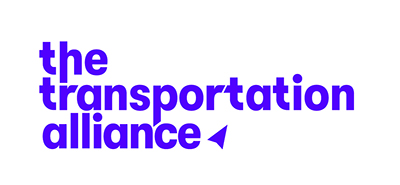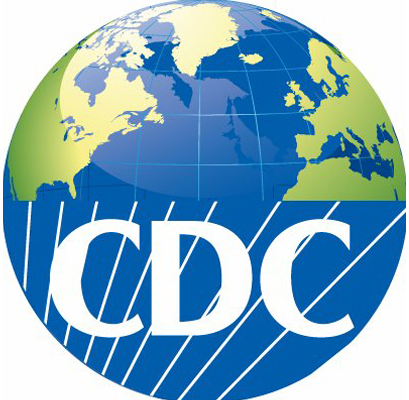- Details
- Category: Industry News
The Transportation Alliance (TTA) announced on May 4 that Ira Goldstein, executive director of The Black Car Fund in New York City, has been named Executive of the Year.
 TTA's Executive of the Year Ira Goldstein
TTA's Executive of the Year Ira Goldstein
The association, formerly known as the Taxicab, Limousine & Paratransit Association (TLPA), highlighted Goldstein’s impressive legal background, having earned degrees from Touro College Jacob D. Fuchsberg Law Center and Fordham University School of Law. His expertise in banking, corporate, and finance law brought him to the transportation industry. In 2001, he joined the New York City Taxi and Limousine Commission, where he served as chief of staff for nine years.
In 2010, he accepted a position at The Black Car Fund. As executive director, Goldstein oversees workers’ compensation for over 80,000 independent black car and limousine drivers in the New York metropolitan area and about 125,000 drivers statewide. With Goldstein’s exceptional leadership, The Black Car Fund has implemented programs to streamline workers’ compensation and increase driver safety.
The Black Car Fund’s Wellness, Safety, and Education Program (STEP) offers affiliated drivers access to exclusive wellness seminars. Through the program’s four components, drivers can learn how to maintain a healthy lifestyle, physically and mentally. The first component provides instruction on proper nutrition, exercise, and stretching specifically designed for drivers. The second focuses on increasing awareness of cycling and pedestrian traffic through the Fund’s “Share the Road” program. The third and fourth components are a hands-only CPR training course and a session on how to respond to AMBER alerts. Drivers are paid $150 for participating the four-hour course.

“We are thrilled to honor Ira Goldstein as our 2020 Executive of the Year,” said TTA President Tom Arrighi. “Ira is exceptionally innovative, and his efforts to promote the well-being and safety of drivers in our industry is commendable. He knows that drivers are a key part of a healthy industry and cannot be overlooked.”
Goldstein has been recognized for his work in the past. He was given the Simon Wiesenthal Center’s first annual 9/11 Commemoration Hero for Tolerance award, and the League of Mutual Taxi Owners’ “Man of the Year” award. He has also received an award for Corporate Social Responsibility in the Banking, Finance, and Insurance fields from City & State Reports, and a “50 Over 50” award from City & State New York as a prominent leader in government, business, and media.
Visit thetransportationalliance.org for more information.
[05.04.20]
- Details
- Category: Industry News
Social distancing and extra disinfection procedures are part of our foreseeable future, and as the country slowly reopens, the Centers for Disease Control and Prevention (CDC) has detailed a number of steps that business owners must to take to keep their teams and customers safe.

In vehicles
While the transportation industry has always been on the forefront of ensuring a safe, enjoyable experience for clients, these added precautions will only enhance the industry’s dedication to being a safe alternative to public transit and ridesharing options. Many operators have shared that they are adding partitions and reducing the number of people in vehicles, often using larger vehicles for fewer passengers to keep a safe distance. Obviously, the use of masks, hand washing whenever possible, reducing contact with passengers, offering hand sanitizing products, and completely cleaning vehicles in between runs with CDC-approved disinfectants are all parts of a safe protocol.
Additional guidelines for transportation providers
Additional guidelines for bus and motorcoach operators
In the office
It’s critical to maintain a safe working environment for your office staff. If your office has been unoccupied for seven or more days, the CDC recommends only the normal routine cleaning to reopen as COVID-19 has not been shown to survive on surfaces longer than this time.
However, additional procedures should be taken upon reopening. According these guidelines, most surfaces and objects in your office will just need normal routine cleaning. Frequently touched surfaces and objects like light switches and doorknobs will need to be cleaned and then disinfected to further reduce the risk of germs on surfaces and objects. Soft and porous materials, such as area rugs and seating, may be removed or stored to reduce the challenges with cleaning and disinfecting them. Work stations should be frequently cleaned and disinfected, and staff should always practice frequent handwashing. Don't forget about your maintaince area and break room.
CDC’s advice for reducing the risk of exposure:
- Coronaviruses on surfaces and objects naturally die within hours to days. Warmer temperatures and exposure to sunlight will reduce the time the virus survives on surfaces and objects.
- Normal routine cleaning with soap and water removes germs and dirt from surfaces. It lowers the risk of spreading COVID-19 infection.
- Disinfectants kill germs on surfaces. By killing germs on a surface after cleaning, you can further lower the risk of spreading infection. EPA-approved disinfectants (list here) are an important part of reducing the risk of exposure to COVID-19. Alternative disinfectants can be used (for example, 1/3 cup of bleach added to 1 gallon of water, or 70% alcohol solutions).
- Store and use disinfectants in a responsible and appropriate manner according to the label. Do not mix bleach or other cleaning and disinfection products together–this can cause fumes that may be very dangerous to breathe in. Keep all disinfectants out of the reach of children.
- Do not overuse or stockpile disinfectants or other supplies. This can result in shortages of appropriate products for others to use in critical situations.
- Always wear gloves appropriate for the chemicals being used when you are cleaning and disinfecting. Additional personal protective equipment (PPE) may be needed based on setting and product.
- Practice social distancing, wear facial coverings, and follow proper prevention hygiene, such as washing your hands frequently and using alcohol-based (at least 60% alcohol) hand sanitizer when soap and water are not available.
Most importantly, once a cleaning protocol has been written and implemented, it is imperative that is distributed to all employees and the proper training has been conducted so that they are following these health-saving procedures.
An in-depth guide can be found at cdc.gov/coronavirus/2019-ncov/community/reopen-guidance.html.
[05.01.20]
- Details
- Category: Industry News
In an event organized by the United Motorcoach Association (UMA) and the American Bus Association (ABA), hundreds of motorcoach companies across the nation have already signed on to participate in the Motorcoaches Rolling for Awareness Campaign, to be held May 13 in Washington, D.C., in the hopes that Congress will extend specific economic relief to the motorcoach industry. The coaches will drive through our nation’s capital adorned with messages highlighting the critical impact that the industry makes on the local and national economy. The event is open to all ABA and UMA members.
“Our ask is simple,” UMA Chairman Jeff Polzien said in a press release. “The U.S motorcoach industry is requesting Congress put motorcoaches back on the road by making available $10 billion in grants for operational and payroll assistance and $5 billion in long-term zero percent interest rate loans to the industry, ensuring these monies are available immediately and easily accessible. Our businesses need a lifeline so we can be there when the country needs us next.”
The motorcoach industry is composed of more than 3,000 operators—mostly small, multi-generational, family-owned companies—with 100,000 employees, and like other hospitality industries, have borne the brunt of the crisis as local and global travel has come to a standstill. ABA and UMA have been highly active in engaging members to contact their representatives, and both associations have been feverishly working on behalf of their members during the pandemic. It’s been reported by both associations that around 95 percent of all motorcoach companies have paused operations, some permanently.
“The current economic remedies available to small businesses don’t address sectors like ours that will take much longer to recover from the current crisis. Airlines, Amtrak, and transits have received more than $75 billion to prop up these industries,” ABA President & CEO Peter Pantuso said. “Of the 3,000 bus and motorcoach companies in the United States, 90 percent are small, family-owned business who have had to close their businesses during the COVID-19 crisis. By having to shut their doors while no one is traveling, nearly 100,000 employees, which include drivers, cleaners, maintenance and repair, administrative and safety personnel, are now without incomes.”
According to a press release shared by the associations, the messaging of how the motorcoach industry makes an impact will include:
- Military transports across the nation for troops in all branches of the U.S. Armed Forces
- Evacuations of Americans from wildfires, hurricanes, tornadoes, floods
- Connecting people to jobs with commuters and employee shuttles
- Connecting rural America to urban centers and to other modes of transportation
- Providing school transportation as well as sports and educational trips
- Reducing congestion by taking 36 cars off the road for each coach
More information about the event and how to register can be found at busesmoveamerica.com.
[05.01.20]


